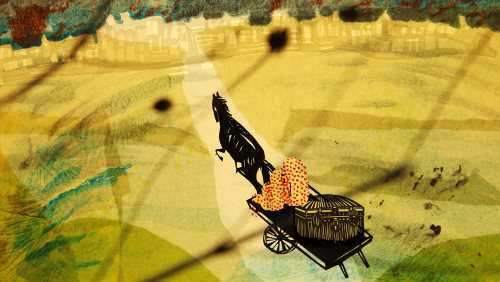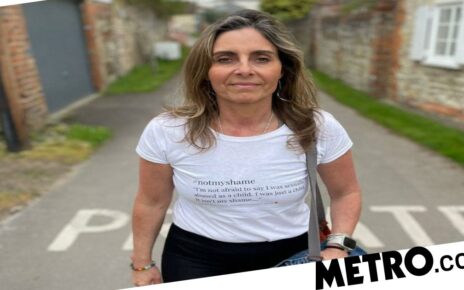Isabel Herguera’s upcoming feature debut “Sultana’s Dream” will be divided into three parts, San Sebastián-born animation artist said at Annecy.
“Innocently enough, I thought it would make things much easier. It didn’t,” she deadpanned, comparing the process to walking a tightrope.
“You don’t know if you are going to fall or not.”
In the film, Inés, a Spanish artist living in India, stumbles upon “Sultana’s Dream” – a story by real-life feminist thinker Rokeya Hossain, written in 1905. It describes Ladyland, a place where women rule the country while men live in seclusion, responsible for household chores.
“Here, we do the logical thing. It’s men that pose a danger to women, not the other way around,” it was explained in the clip presented at the fest, to the applause of the audience.
Each part comes with its own visual style, said Herguera.
While Inés’ journey is rendered in 2D, in ink and watercolor – “inspired by my own travel sketchbooks” – Rokeya’s life is depicted via shadow puppets. Finally, traditional Mehndi technique, usually associated with temporary skin decoration, was used to create Ladyland.
The nearly completed animation, inspired by Hossain’s revolutionary ideas, is produced by Sultana Films, El Gatoverde Producciones, Abano Producións, UniKo and Germany’s Fabian&Fred. Basque, Spanish, English, Hindi, Bengali and Italian will be heard in the film.
Herguera has been visiting India since 2005.
“That’s when my life has changed,” she said.
“Later, I was finishing [short] ‘Under the Pillow’ when I stepped into a gallery in New Delhi. I found this book, lying on the table. I thought: ‘This is the next film I want to make.’”
“It’s mainly interesting for adults, but we hope to get as many people as possible into the cinema. It’s a very immersive experience, so a theatre is definitely the place to watch it,” said producer Fabian Driehorst.
“When I see girls getting enthusiastic about it, I get goosebumps. This is the target for me and the goal,” added Herguera.
Reflecting on the film’s long journey, she also opened up about her beginnings. Including a stint studying art under the eye of Nam June Paik in Germany and one very unfortunate exhibit.
“In 1988, I decided to prepare an installation with fried eggs. There I was, frying my eggs, when a journalist stepped in. She asked me what I was doing. Later, I took a step back and saw all these 300 eggs, decaying. I panicked and cleaned it all up, but the next day there was that headline already: ‘Bureaucracy and Fried Eggs.’ Everybody wanted to see it, but the exhibition was a ghost.”
It was an animation workshop that actually renewed her interest in art, she admitted.
“As Virginia Woolf would say, I found a room of my own. A place where I felt free. I believe my background is an important part of how I approached the process of making ‘Sultana’.”
Trying to place Hossain’s concepts in a contemporary context, she held several workshops with local women over the years, interviewing them about their lives and their own interpretations of the tale.
The finished film will also feature scholar Mary Beard and Paul B. Preciado, while musician Moushumi Bhowmik is also involved.
“As it happens to many visionary artists, their projects can be ahead of their time. It’s a big handicap that often drives them to failure, but the team we have put together had one thing in common: perseverance,” observed Herguera’s longtime producer Chelo Loureiro of Abano Producións.
“Thanks to them we are now in the final stretch of this wonderful film that, just like good wine, has matured over time to become a true delicacy.”
Read More About:
Source: Read Full Article


